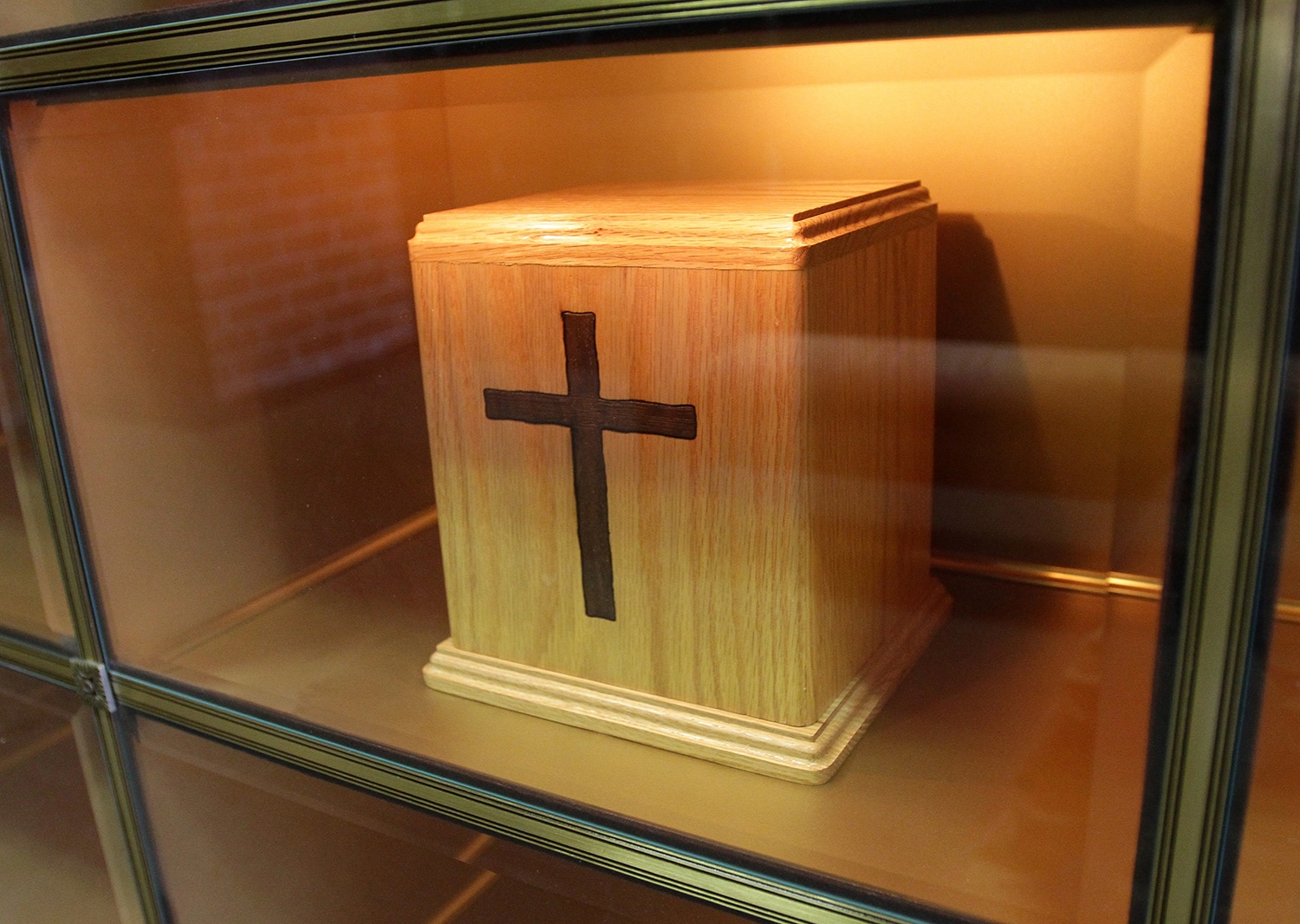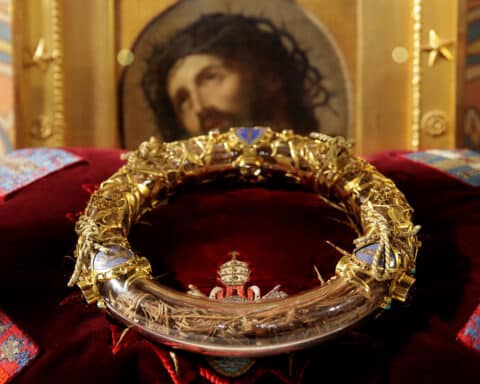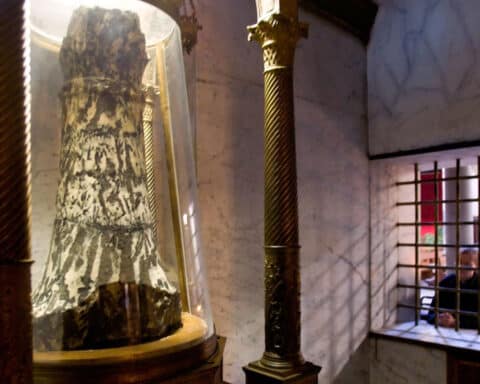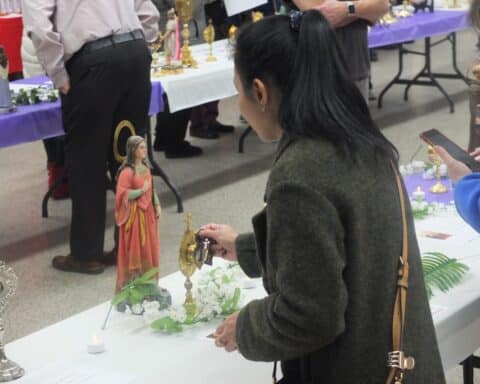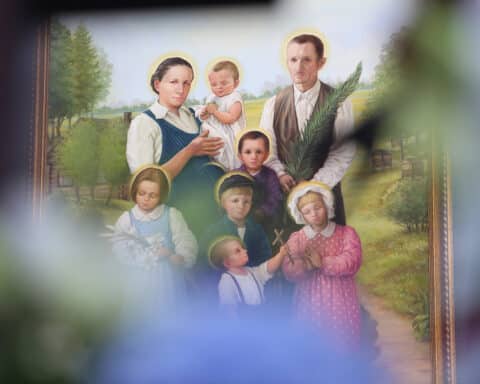Question: After cautioning a family member to keep our loved one’s cremains intact, I find it hard to understand why the dismembering of a saint’s body is allowed, especially when body parts are often sent to different locations.
— Colette Fike, Indianapolis, Indiana
Answer: The context of the two scenarios is quite different. The Church’s directive is that the cremated remains of an individual are not to be separated but are to be buried together in one place or placed in a mausoleum. This shows reverence for the body. Cremains are not ashes; they are what remains of the body after cremation. Such directives are all the more important, because many strange practices have been taken up since cremation has become more common. Some families, as you mention, like to divide the remains and send portions to various family members. Some families have taken to scattering the remains in the woods, or in the ocean. Strangest of all, some actually have the cremains made into some sort of jewelry.
Honoring cremains
One may ask, what is wrong with dividing the cremains? Well, consider the remains or what remains of the body. We would not think of having an arm removed and sent to one family member, a leg sent somewhere else, and so forth. The Church asks us to consider cremains in the same way. If cremains are buried, all the cremains should be buried together. They should also be placed in some sort of container that keeps them intact as the cremains are placed in the ground. Scattering cremains out in the open makes it likely that they will be trampled underfoot by animals, or even ingested as food. All of this takes away from the reverence that is due to the human body.
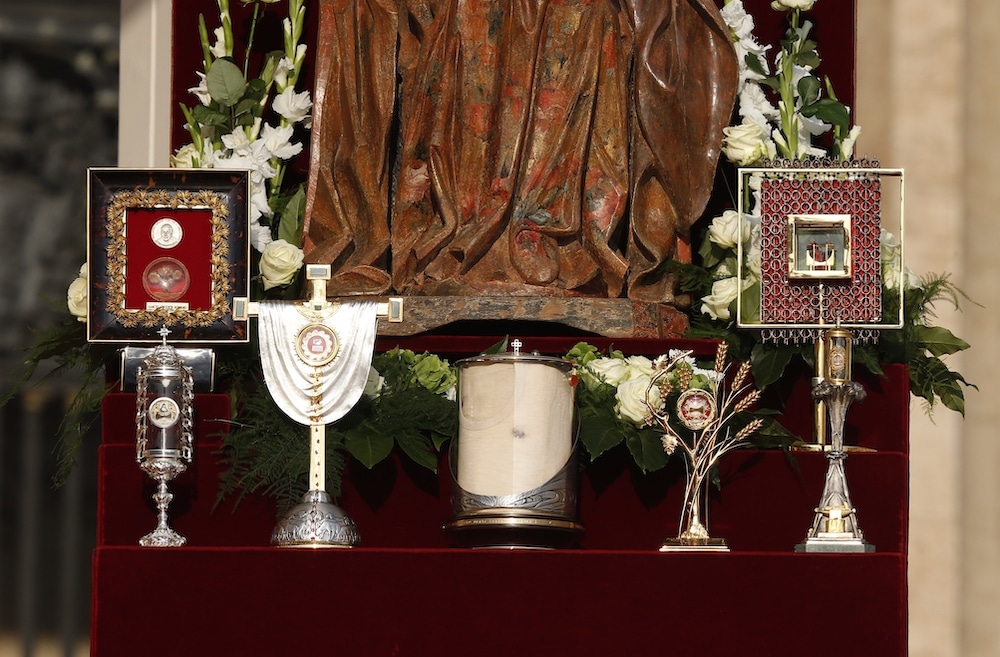
As for the distribution of relics, in modern times, this usually involves only very small fragments of the bone, or hair of a deceased saint. They are distributed, long after the death of the person, who has already received burial. Before canonization, the bodies of saints are investigated, and if there are small fragments of the bone, etc., they are collected to be used for relics. However, note this important difference: relics are distributed for veneration not as a form of disposal of the body or an arbitrary dividing up of it. The relics are placed in a small glass and metal container and are expected to be reverently displayed for the veneration of the faithful. They are not to be scattered about, or placed in closets or drawers or carried about in pockets or worn as necklaces as if they were some amulet.
Veneration of relics
The key difference is veneration. Another main difference is that a canonized saint is involved. Since death came to man as a punishment for original sin, the bodies of the dead, while deserving respect, are not an object for veneration. But when a saint is canonized, the Church, based on evidence, tells us that they now reign with Christ. Hence, small relics of their bodies become a source of blessing and a sign of triumph.
It is true that, at some points in Church history, large parts of the bodies of some saints were removed and placed in various locations. This is not generally done today, due to some of the sensitivities that you raise with more widespread cremation.
But in the end, context is important. What remains of the human body after death is to be reverently buried intact. Only in the case of a canonized saint may small fragments of bone or hair or other such things be removed from the casket and sent among the faithful for veneration.

